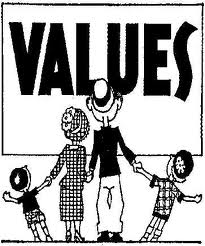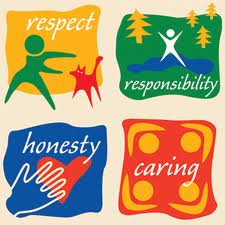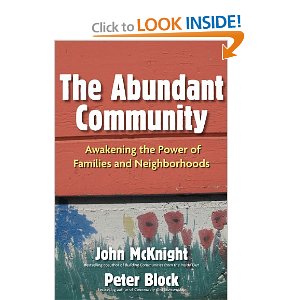 Yesterday, I introduced the idea of non-profit organizations looking in some non-traditional places to generate revenue such as “selling things” through unrelated business income efforts. Of course, I see non-profits also looking at “related” business income opportunities. Regardless, we’ll be talking about this topic for the remainder of this week. Today, we’re doing a deeper dive on what I think is driving this way of thinking and providing a few tips to those looking at this opportunity.
Yesterday, I introduced the idea of non-profit organizations looking in some non-traditional places to generate revenue such as “selling things” through unrelated business income efforts. Of course, I see non-profits also looking at “related” business income opportunities. Regardless, we’ll be talking about this topic for the remainder of this week. Today, we’re doing a deeper dive on what I think is driving this way of thinking and providing a few tips to those looking at this opportunity.
In the majority of my blog posts, I’ve talked about charitable giving and the $300 billion dollars every year that Americans contribute to charities. The reality is that the non-profit sector reports approximately $1.5 trillion in revenues and $2.5 trillion in assets (source: Philanthropy Journal). In round numbers, the Paul Clarke Nonprofit Resource Center reported a number of years ago that nonprofit revenue shakes out in the following way:
- 20 percent private contributions (e.g. fundraising)
- 45 percent fees and services (e.g. tuition and health related fees for service)
- 32 percent government grants and purchase of service agreements (e.g. Medicare, Medicaid, etc)
However, the 45 percent slice of the pie can be really deceiving as it was pointed out by Amy Blackwood, Kennard T. Wing and Thomas H. Pollak in their white paper titled “The Nonprofit Sector in Brief“. When looking at fees and services, they reported:
“These distributions, however, are largely driven by hospitals and higher education institutions. If we exclude these organizations, the distribution of sources of revenue changes substantially. In contrast, the remaining organizations are less dependent on fees for services and goods and more dependent on private contributions and government grants.”
 So, I relayed a conversation in yesterday’s post — “What’s the next new thing in non-profit fundraising” — that I had with a very dear non-profit friend over a cup of coffee. In that discussion, she hypothesized that the next new thing might involve non-profits “selling more things”. I’ve concluded that she may indeed be right for the following reasons:
So, I relayed a conversation in yesterday’s post — “What’s the next new thing in non-profit fundraising” — that I had with a very dear non-profit friend over a cup of coffee. In that discussion, she hypothesized that the next new thing might involve non-profits “selling more things”. I’ve concluded that she may indeed be right for the following reasons:
-
As you can see from the aforementioned source of funds data, non-profit organizations have been selling services and charging fees for years. While this as primarily been healthcare and education related charities, I suspect that during tough economic times agencies start “looking around” at their fellow non-profits for ideas to “borrow”.
-
My blogger friend, Joanne Fritz at about.com, also captured some of what I’m seeing in her post titled “Recession Provides Bump to Thrift Shopping and Social Responsibility“.
 For those entrepreneurial minded non-profit professionals out there who are intrigued by this possible trend, I have a few suggestions:
For those entrepreneurial minded non-profit professionals out there who are intrigued by this possible trend, I have a few suggestions:
-
First things first . . . sit down and figure out upon which revenue model you’re building your non-profit agency. This is one of those foundational decisions that shouldn’t be taken lightly. The Stanford Social Innovation Review did a very nice job distilling this question into 10 different revenue models. Click here to read that article.
-
If you want to open a store and sell stuff, then you need to start thinking and acting like a for-profit business person. Being a non-profit in a for-profit environment might not work very well. While this single thought could (and probably should become a blog post unto itself), I will share the following few tips: take a few business courses; develop a written business plan; remember that it is all about location-location-location; figure out the “pricing points” thing quickly; and be prepared to do marketing in a very different way from what you’ve done for your non-profit services.
-
Be extra careful with the “unrelated business income” thing. You don’t want the IRS to take away your non-profit status.
-
Tie your income-oriented “business venture” into your mission. If done correctly, you might be able to generate income from sales AND cultivate a new base of donors who are ALSO willing to make charitable contributions to your private sector fundraising efforts. This could be done in a variety of ways including: employing clients to operate the store, selling items made by your clients, decorating the store with mission-focused messages, etc
-
Involve your donors. If you look throughout your donor database, you’ll find a diversity of people from many different walks of life that possess a variety of skill sets and experiences. You’re not in this thing alone . . . you have passionate supporters who love you. If you engage those donors the right way, you might just see their involvement impact how they see your mission and their support of it.
Lots and lots and lots of questions, and the answers can get very complicated. So, before leaping, make sure you take a very hard look at whether or not this is something that fits with your organizational culture.
Does your agency operate a store or business venture? Please share your successes and challenges. Maybe its not a store, but you’re starting to eye product sale opportunities (e.g. cookies, candy bars, popcorn, etc). If so, what are the considerations racing through your mind. Please scroll down and share some of your lessons and considerations in the comment box below.
Here’s to your health!
Erik Anderson
Founder & President, The Healthy Non-Profit LLC
www.thehealthynonprofit.com
erik@thehealthynonprofit.com
http://twitter.com/#!/eanderson847
http://www.facebook.com/eanderson847
http://www.linkedin.com/in/erikanderson847































